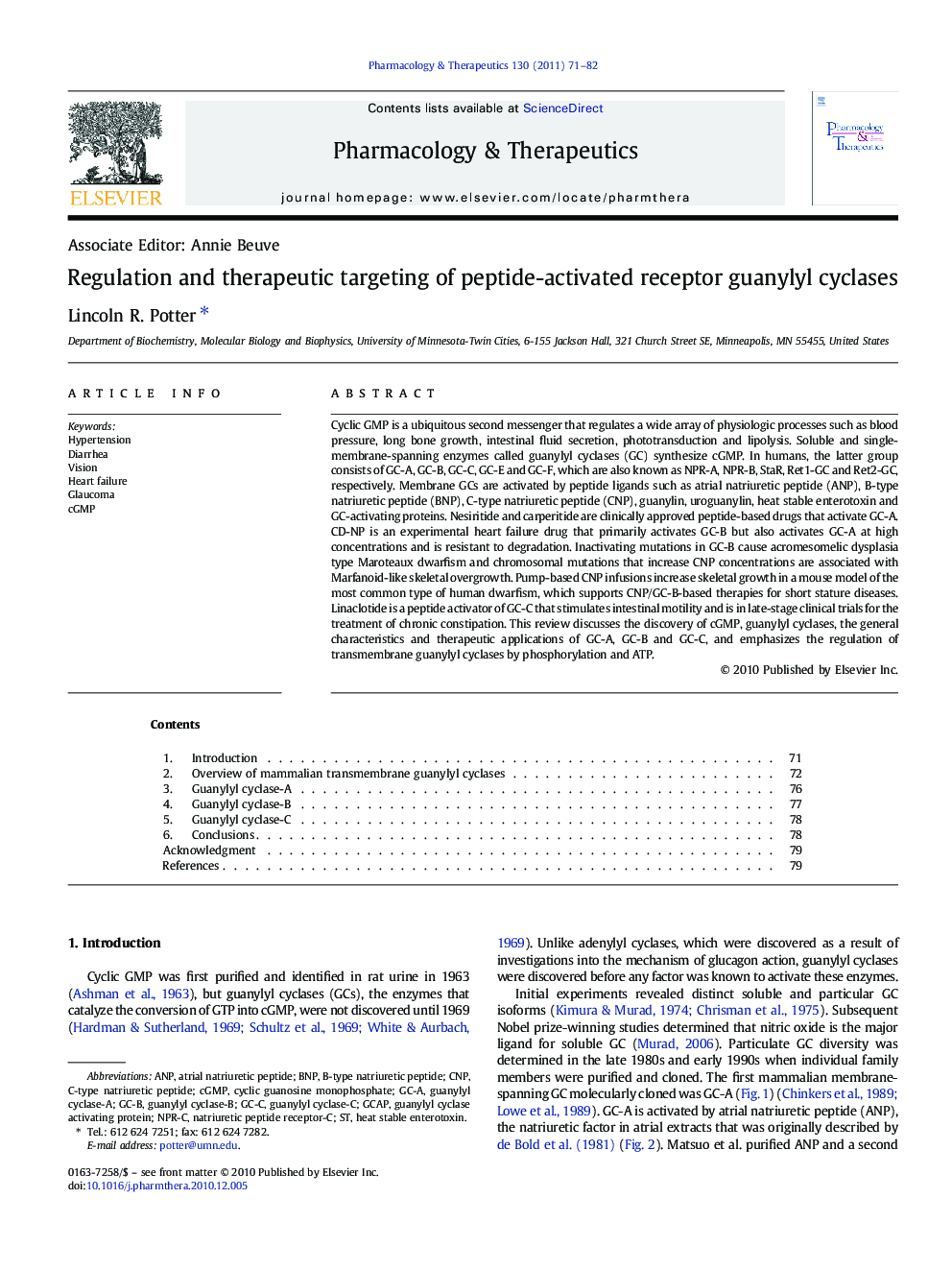| Article ID | Journal | Published Year | Pages | File Type |
|---|---|---|---|---|
| 2564118 | Pharmacology & Therapeutics | 2011 | 12 Pages |
Cyclic GMP is a ubiquitous second messenger that regulates a wide array of physiologic processes such as blood pressure, long bone growth, intestinal fluid secretion, phototransduction and lipolysis. Soluble and single-membrane-spanning enzymes called guanylyl cyclases (GC) synthesize cGMP. In humans, the latter group consists of GC-A, GC-B, GC-C, GC-E and GC-F, which are also known as NPR-A, NPR-B, StaR, Ret1-GC and Ret2-GC, respectively. Membrane GCs are activated by peptide ligands such as atrial natriuretic peptide (ANP), B-type natriuretic peptide (BNP), C-type natriuretic peptide (CNP), guanylin, uroguanylin, heat stable enterotoxin and GC-activating proteins. Nesiritide and carperitide are clinically approved peptide-based drugs that activate GC-A. CD-NP is an experimental heart failure drug that primarily activates GC-B but also activates GC-A at high concentrations and is resistant to degradation. Inactivating mutations in GC-B cause acromesomelic dysplasia type Maroteaux dwarfism and chromosomal mutations that increase CNP concentrations are associated with Marfanoid-like skeletal overgrowth. Pump-based CNP infusions increase skeletal growth in a mouse model of the most common type of human dwarfism, which supports CNP/GC-B-based therapies for short stature diseases. Linaclotide is a peptide activator of GC-C that stimulates intestinal motility and is in late-stage clinical trials for the treatment of chronic constipation. This review discusses the discovery of cGMP, guanylyl cyclases, the general characteristics and therapeutic applications of GC-A, GC-B and GC-C, and emphasizes the regulation of transmembrane guanylyl cyclases by phosphorylation and ATP.
